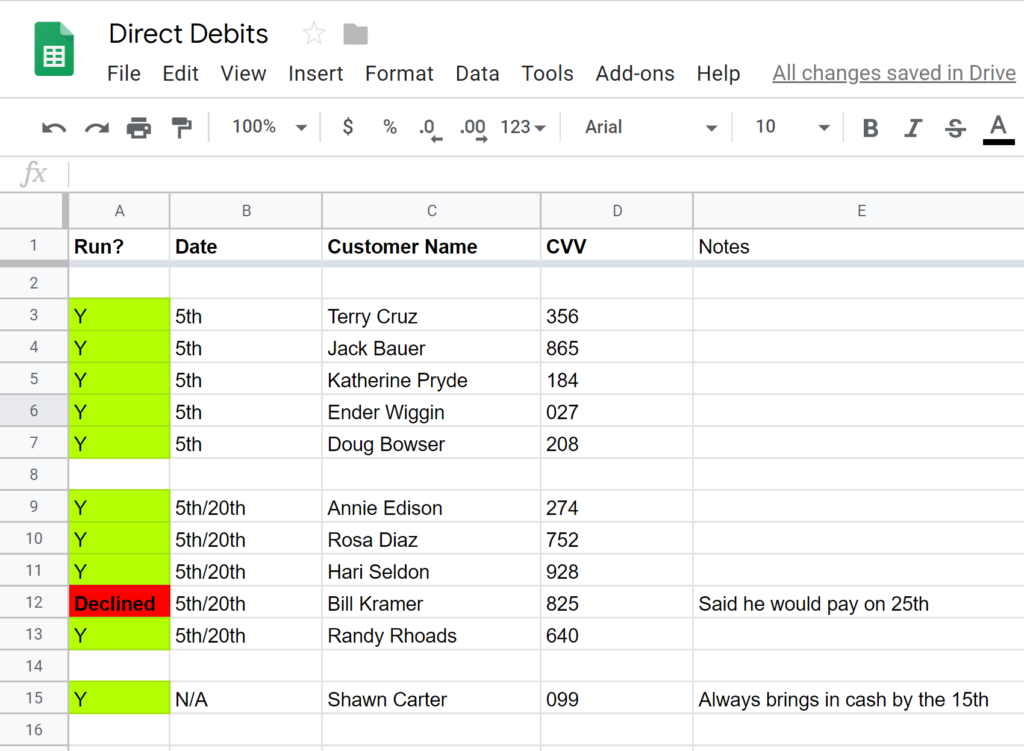To manage direct debits you will need to use two things:
- The Intrix Customer Vault, which stores billing and credit card numbers. (It stores everything except the CVV code.)
- A spreadsheet or list of some sort, to know which families you should direct debit and when, along with the CVV code for their credit card
Storing credit card numbers
See this page on how to store credit cards in Intrix’s “Customer Vault.”
Creating your spreadsheet
Create a spreadsheet which contains the following information:
- A column for the name of the primary customer
- A column for the date that they want to be billed on
- A column for the CVV code for their credit card
- A column for keeping track whether the transaction was successful
Here is an example of what your spreadsheet might look like.

Using the spreadsheet
To use this spreadsheet, simply open it on the 5th and 20th (and any other days your center runs payments) and use it as a checklist of whose cards you are going to run. When a transaction is run, mark the appropriate column with an indicator of whether the transaction was successful not. Call all families immediately when their transaction fails.
Follow up on failed transactions every day until all payments are received. Aggressive follow-up helps prevent accounts from becoming overdue and will keep your accounts receivable clean.
Keeping the spreadsheet updated
As part of your Hub enrollment process, you will add new Direct Debit families to this list. You will also remove people from this list when they disenroll. As such, this list should always reflect your current families.
If you find yourself with an outdated spreadsheet, you can generate one from either your Accounts Receivable list. (Any Direct Debit families will show up there if they have not paid for the month.) You can also do an advanced find search for the “Pay on Invoice” flag.
